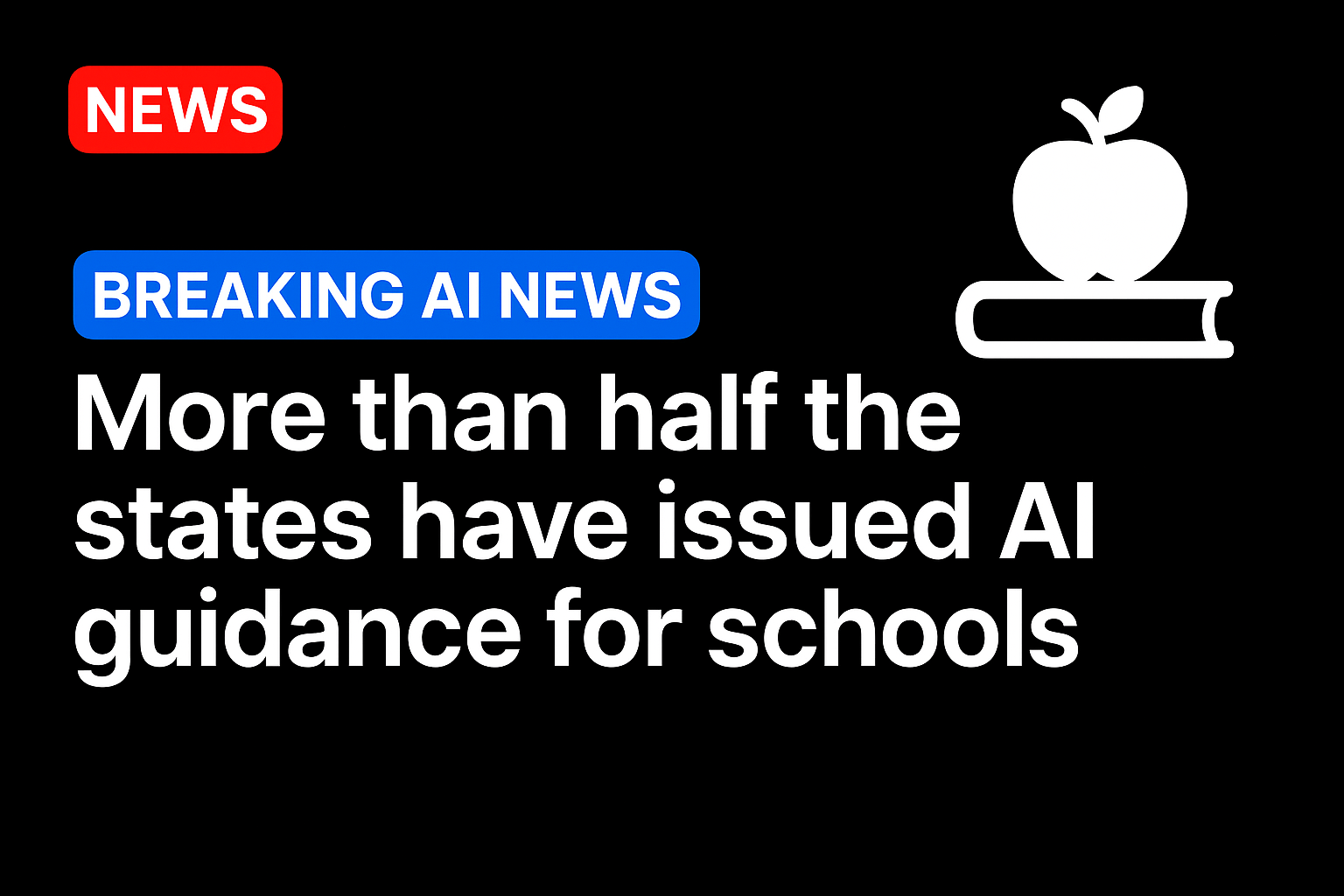Agencies in at least 28 states and the District of Columbia have issued guidance on the use of artificial intelligence in K-12 schools.
More than half of the states have created school policies to define artificial intelligence, develop best practices for using AI systems and more, according to a report from AI for Education, an advocacy group that provides AI literacy training for educators.
Despite efforts by the Trump administration to loosen federal and state AI rules in hopes of boosting innovation, teachers and students need a lot of state-level guidance for navigating the fast-moving technology, said Amanda Bickerstaff, the CEO and co-founder of AI for Education.
“What most people think about when it comes to AI adoption in the schools is academic integrity,” she said. “One of the biggest concerns that we’ve seen — and one of the reasons why there’s been a push towards AI guidance, both at the district and state level — is to provide some safety guidelines around responsible use and to create opportunities for people to know what is appropriate.”
North Carolina, which last year became one of the first states to issue AI guidance for schools, set out to study and define generative artificial intelligence for potential uses in the classroom. The policy also includes resources for students and teachers interested in learning how to interact with AI models successfully.
In addition to classroom guidance, some states emphasize ethical considerations for certain AI models. Following Georgia’s initial framework in January, the state shared additional guidance in June outlining ethical principles educators should consider before adopting the technology.
This year, Maine, Missouri, Nevada and New Mexico also released guidelines for AI in schools.
In the absence of regulations at the federal level, states are filling a critical gap, said Maddy Dwyer, a policy analyst for the Equity in Civic Technology team at the Center for Democracy & Technology, a nonprofit working to advance civil rights in the digital age.
While most state AI guidance for schools focuses on the potential benefits, risks and need for human oversight, Dwyer wrote in a recent blog post that many of the frameworks are missing out on critical AI topics, such as community engagement and deepfakes, or manipulated photos and videos.
“I think that states being able to fill the gap that is currently there is a critical piece to making sure that the use of AI is serving kids and their needs, and enhancing their educational experiences rather than detracting from them,” she said.
Source: newsfromthestates.com/




